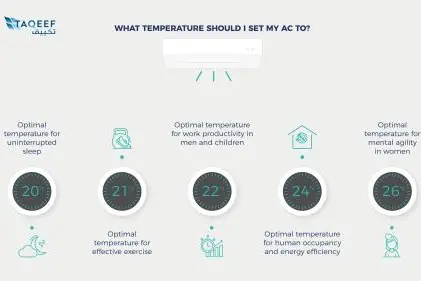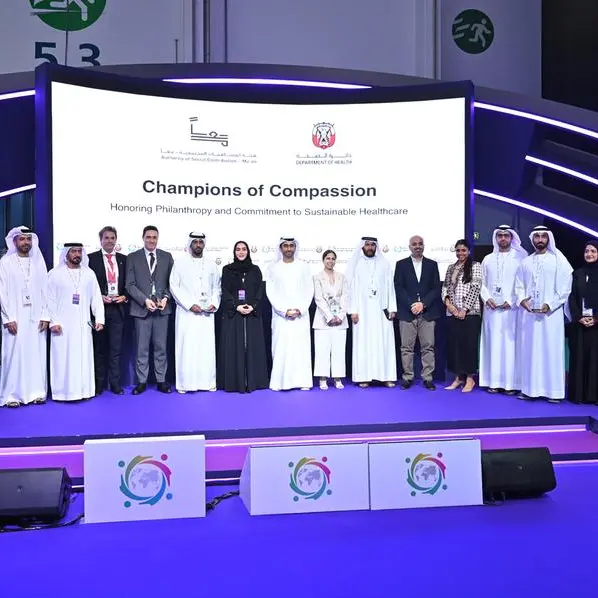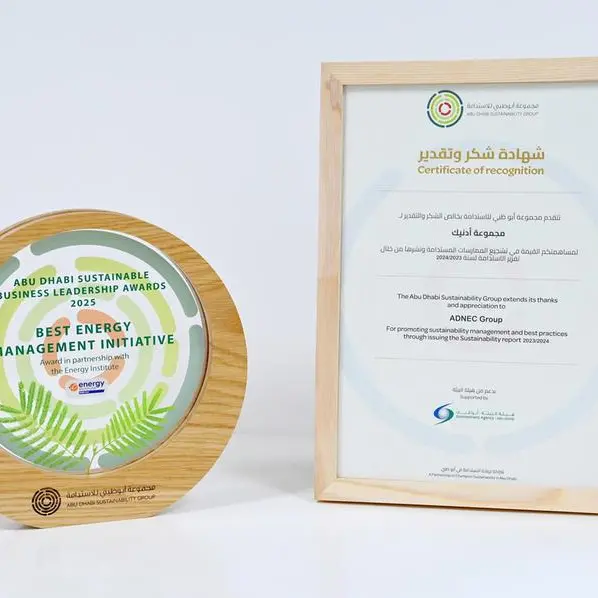PHOTO
Dubai – Indoor temperature can have a direct impact on at-home work productivity, learning and wellbeing according to scientific research compiled by cooling company Taqeef.
The research showed that successful outcomes for routine tasks could be impacted by just a few degrees, and according to psychologist Dr. Saliha Afridi of LightHouse Arabia, these findings could be a useful tool for living, working and learning successfully at home during current movement restrictions.
The data which draws on scientific and academic studies shows:
- 24°C is the optimal standard temperature for human occupancy and energy efficiency
- A slightly cooler temperature of 22°C effectively aids the highest level of work productivity (for men and children)
- Women have better mental agility at higher temperatures (26°C)
- Uninterrupted sleep is better achieved in cooler temperatures (20°C)
- Exercise is also more effective at cooler temperatures (20°C-21°C)
Commenting on the research compilation, Dr. Saliha Afridi, PsyD (US) Clinical Psychologist, Managing Director of LightHouse Arabia commented: “So many of us discount the importance of the environment on our mood and activity. The truth is that our environment, and with it the temperature in that environment, has such a profound effect on how productive we are, as well as how deeply we sleep or how energetic we feel. A difference of a few degrees can have a significant impact on how optimally you function, how engaged you are, and how rested you feel.”
Temperature and work productivity
Multiple studies have assessed indoor temperature and work productivity. The conclusion is while in general people should set their AC to 22-25°C while working from home for productivity[i] it’s a setting of 22°C that facilitates the most productive outputs. In studies, employees demonstrated a 2% decrease in productivity and increase in errors for every 1° over 25°C. A survey study published in Facilities Management Journal also revealed nearly 1/3 of workers lose productivity and 29% of them are unable to focus and work efficiently on average between 10 and 30 minutes per day due to unsuitable AC temperatures.[ii]
Gender variations
However, according to an experiment conducted by USC Marshall School of Business, women benefit from a temperature of 26°C or more when working at home. The study further elaborated that women worked better as the temperatures rose, while the reverse effect was observed for men. When the temperature was over 26°C, female performance increased by 27% compared to temperature below 21°C[iii].
Temperature and learning
Children are more susceptible to environmental conditions and work better in slightly colder environments, according to a study by Technical University of Denmark that looked into the effects of HVAC on student performance. Findings showed that when temperature was reduced from 25°C to 20°C, test performance significantly improved in terms of speed.[iv] A similar experiment demonstrated results where students performed best when the AC was set to 22°C with test scores averaging in the 90th percentile.[v]
Temperature and sleep
The American Sleep Association found out that cooler temperatures between 14-20°C equate to better sleep, because internal temperature drops while sleeping. While the body is the coolest in the deepest phases of sleep, cooler room temperatures helps achieve the best state of sleep. The optimum temperature for sleeping is anywhere between 14°C and 20°C. However, a study explained that setting the AC temperature too low for too long can negatively affect immune systems[vi]. Furthermore, temperature should increase over the span of the night within the range of 20 – 32°C.[vii]
Temperature, mood and mental health
Humid environments increase fatigue and reduced positive mood, making people feeling more lethargic. Warmer temperatures lead to a decrease in people’s mood and mental health, while cooler temperatures decrease the level of adverse mental health outcomes. Additionally, warmer temperatures increase negative health outcomes, leading to more violent behavior and aggression[viii].
Temperature and exercise
Medical experts from Duke University and Fitness Center say that temperatures between 20°C and 22°C is the optimal temperature for working out. Though personal preference varies to some degree, as some people sweat more than others during exercise, but 20°C is the optimal average temperature for most people. A study led by professors at Maastricht University Medical Centre also showed results supporting regular exposure to cold air to be beneficial to increase energy expenditure.[ix]
Thermal comfort
“Maintaining thermal comfort is one of the most important goals of AC – and while there are many variables that affect this - clothing, humidity, heat sources and activity levels – we felt some guidelines on task temperature control could be a useful reference point. We’re all looking for ways to live, work and play more comfortably while at home, and this research is a useful barometer for considered cooling at this challenging time.” Comments Tariq Al Ghussein, Chairman and CEO at Taqeef.
-Ends-
About Taqeef
Taqeef is the originator of desert cooling systems in the UAE and the Middle East’s leading air conditioning solutions provider. Since 1972, Taqeef has served the country’s evolving cooling needs with world-class technology, innovation and service. Taqeef is committed to driving responsible Air-Conditioning use and promoting environmental efficiency in the industry across the Middle East.
References:
[i] Cornell University – Warm offices linked to fewer typing errors and higher productivity
[ii] Facilities Management Journal – Unsuitable office Temperatures costs time and productivity
[iii] USC Marshall School of Business – Battle for the thermostat: Gender and the effect of temperature on cognitive performance
[iv] Technical Study Denmark –
Effects of HVAC on Student Performance
[v] University of Tulsa – Effects of Classroom Ventilation Rate and Temperature on Students’ Test Scores
[vi] MDPI Journal – Effects of Changing Air Temperature at Different Sleep Stages on the Subjective Evaluation of Sleep Quality
[vii] Institute of HVAC and Gas Engineering – A study on the thermal comfort in sleeping environments in the subtropics—Developing a thermal comfort model for sleeping environments
[viii] European Journal of Psychology – Too hot to help! Exploring the impact of ambient temperature on helping
[ix] Maastricht University Medical Centre – Cold acclimation recruits human brown fat and increases nonshivering thermogenesis
Send us your press releases to pressrelease.zawya@refinitiv.com
© Press Release 2020Disclaimer: The contents of this press release was provided from an external third party provider. This website is not responsible for, and does not control, such external content. This content is provided on an “as is” and “as available” basis and has not been edited in any way. Neither this website nor our affiliates guarantee the accuracy of or endorse the views or opinions expressed in this press release.
The press release is provided for informational purposes only. The content does not provide tax, legal or investment advice or opinion regarding the suitability, value or profitability of any particular security, portfolio or investment strategy. Neither this website nor our affiliates shall be liable for any errors or inaccuracies in the content, or for any actions taken by you in reliance thereon. You expressly agree that your use of the information within this article is at your sole risk.
To the fullest extent permitted by applicable law, this website, its parent company, its subsidiaries, its affiliates and the respective shareholders, directors, officers, employees, agents, advertisers, content providers and licensors will not be liable (jointly or severally) to you for any direct, indirect, consequential, special, incidental, punitive or exemplary damages, including without limitation, lost profits, lost savings and lost revenues, whether in negligence, tort, contract or any other theory of liability, even if the parties have been advised of the possibility or could have foreseen any such damages.




















